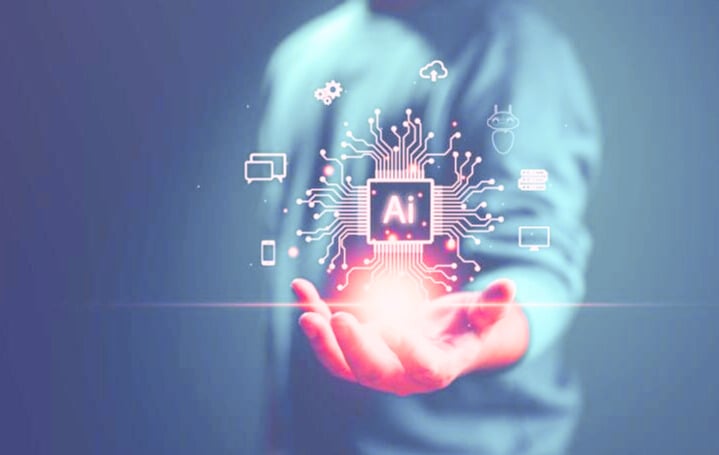Generative AI Changing how about technology in the 21st century.
Generative AI Changing how we think about creativity and technology in the 21st century.
Generative AI is one of the most interesting and quickly changing areas in AI right now. It’s not enough to only look at or understand data; you also have to make fresh material that can imitate or even surpass human ingenuity. Generative AI is changing the way we come up with new ideas, talk to each other, and solve issues in big ways. It can make realistic pictures and text, write music, and design goods.
What is Generative AI, Exactly?
Generative AI is all about algorithms and models that can make fresh, original content by learning from patterns in existing data. Generative models, on the other hand, create new data that is similar to the examples they were trained on but not a direct replica. This is different from standard AI models, which mostly classify or predict outcomes.
Think about an AI that can write a poem, paint a painting, or write an email, all of which are made up on the spot. This is an illustration of how generative AI works.
How does it work?
Generative AI usually uses powerful deep learning architectures to figure out complicated patterns in data. Here are some of the most important ways to go about it:
This architecture is what makes many of today’s cutting-edge generative systems, like OpenAI’s GPT series, work. Transformers look at sequences of data, like sentences, to guess and make new sequences that seem natural and make sense.
GANs, or Generative Adversarial Networks, were created in 2014. They are made up of two neural networks that compete with each other: a generator and a discriminator. The generator makes phoney things, like pictures, and the discriminator tries to discern which ones are real and which ones are fake. GANs learn to make outputs that look very lifelike through this competition.
Variational Autoencoders (VAEs) are models that compress data into a smaller form and then rebuild it. This lets you create new data points in a controlled way. They are often used to make images and find strange things.
How Generative AI Works in the Real World
Generative AI isn’t just a theory; it’s being used in real-world applications that make a difference in many fields:
1. Writing and making content
AI can now write whole articles, marketing material, social media messages, and even books.
Tools like ChatGPT help authors by coming up with ideas or writing drafts.
Creating personalised content makes people more interested in digital marketing.
2. Art and design that you can see
AI helps artists and designers make one-of-a-kind digital paintings, logos, and 3D models.
With GANs, it is now possible to make photorealistic pictures and even deepfake videos.
AI-driven design speeds up the process of making prototypes in fashion, architecture, and product development.
3. Sound and music.
AI systems write new songs in a wide range of styles and moods.
Voice synthesis techniques make speech sound genuine for virtual assistants, audiobooks, and dubbing.
AI-generated effects and soundtracks are helpful for sound design in movies and games.
4. Video Games and Virtual Worlds
AI-powered procedural creation produces huge, immersive gaming worlds.
AI makes people, conversation, and story arcs that are realistic and change over time.
Adaptive and customised material makes the game more fun for players.
5. Health care and medicine
Generative AI speeds up the process of finding new drugs by creating new chemical structures.
It helps researchers and doctors simulate biological processes for research and diagnosis.
AI-generated medical images help radiologists find problems early.
6. Customer service and automation
AI chatbots answer client questions right away and in a way that sounds like a person.
Automated email draughting and summarisation help professionals save time.
Personalised suggestions make people happier with e-commerce.
What makes Generative AI a game-changer?
AI’s ability to create new things is a big step towards closing the gap between human creativity and machine intelligence. It makes it easier for everyone, from experts to hobbyists, to make content by giving them access to the tools they need.
Increases productivity by automating repetitive creative chores, which lets people focus on more important ideas.
Allows for personalisation: Customises content for each user, making it more relevant and powerful.
Drives Innovation: Makes it easier to quickly make prototypes and try new things in art, science, and engineering.
Increases Access: Helps people with less skills or resources be more innovative.
Difficulties and Moral Issues
With a lot of power comes a lot of responsibility. There are a few problems with generative AI:
AI may make phoney news, photos, or videos that look real. This is called misinformation or deepfakes.
Intellectual Property: There are questions about who owns content made by AI.
Bias and Fairness: AI algorithms may copy or make worse the biases that are already in the training data.
Job Loss: Automating creative tasks could have an effect on jobs in several fields.
To securely use the benefits of generative AI, the tech community, government, and society must work together to set ethical standards, encourage openness, and put rules in place.
What Will Happen to Generative AI in the Future
Generative AI is still changing at an incredible rate. Some possible future improvements are:
AI collaborators will be able to talk to people more and help them with creative tasks in real time.
AI models that can create content in more than one way, such as mixing text, graphics, audio, and video
Better explainability helps consumers understand how AI makes content.
More integration of business, healthcare, education, and entertainment into everyday life.
In short, generative AI is changing both the world of technology and the world of creativity. It gives us the power to think of, plan, and make things that we thought were impossible. As we move forward, it will be important to find a balance between being innovative and being morally responsible in order to get the most out of this groundbreaking technology.
Share this content:














1 comment